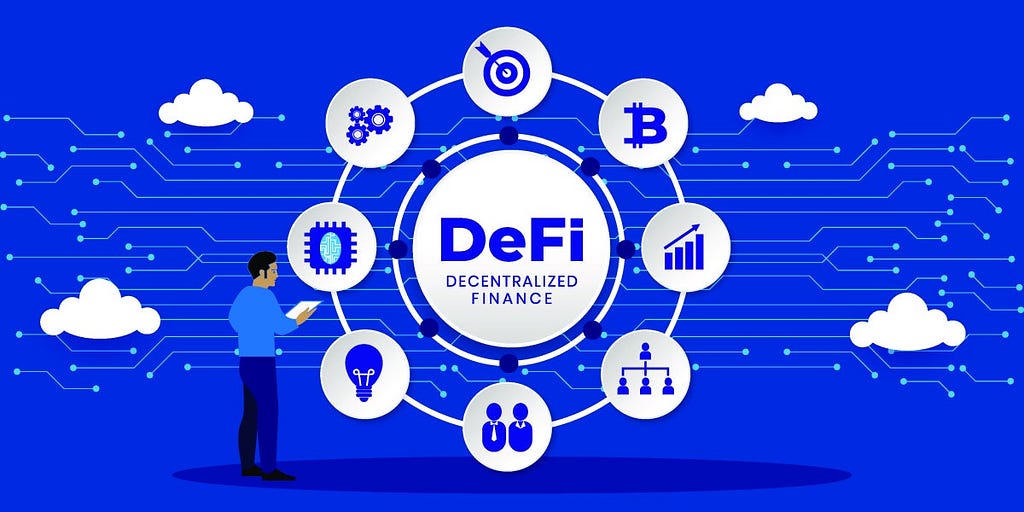
Decentralized Finance (DeFi) represents a significant shift in the financial landscape by leveraging blockchain technology to create open and permissionless financial systems. As businesses and developers explore opportunities in DeFi, it is essential to understand how to build secure and scalable DeFi applications. This guide provides a comprehensive overview of the steps involved in developing a successful DeFi solution.
Understanding DeFi
DeFi refers to a suite of financial applications in cryptocurrency or blockchain geared toward disrupting financial intermediaries. By using smart contracts on blockchains like Ethereum, DeFi applications facilitate various financial services, including lending, borrowing, trading, and earning interest on crypto assets. The benefits of DeFi include:
Accessibility: Anyone with an internet connection can access DeFi services without needing a bank account.
Transparency: All transactions are recorded on the blockchain, providing a clear audit trail.
Control: Users retain control over their assets through non-custodial wallets.
Step 1: Define Your DeFi Application’s Purpose
Before diving into defi development, clearly define the purpose of your DeFi application. Identify the specific problems your app aims to solve and who your target audience is. Common use cases include:
Lending and Borrowing Platforms: Enable users to lend their assets for interest or borrow against their crypto holdings.
Decentralized Exchanges (DEXs): Facilitate peer-to-peer trading without intermediaries.
Yield Farming and Liquidity Pools: Allow users to earn rewards by providing liquidity.
Step 2: Choose the Right Blockchain Platform
Selecting the appropriate blockchain is crucial for your DeFi project. While Ethereum is the most popular choice due to its robust smart contract capabilities, other options like Binance Smart Chain, Solana, and Polkadot may also be suitable depending on your specific needs and scalability requirements. Consider factors such as transaction speed, fees, and community support when making your selection.
Step 3: Design the Architecture of Your DeFi App
A well-thought-out architecture is essential for building a scalable application. Key components include:
Smart Contracts: These are self-executing contracts with the terms of the agreement directly written into code. They automate processes such as lending, borrowing, and trading.
User Interface (UI): Design an intuitive UI that simplifies user interactions with your application.
Backend Infrastructure: Ensure that your backend can handle requests efficiently and securely.
Step 4: Develop and Test Smart Contracts
Smart contracts are at the heart of any DeFi application. When developing smart contracts:
Write Clear Code: Ensure that your code is well-documented and easy to understand.
Conduct Thorough Testing: Use testing frameworks like Truffle or Hardhat to simulate various scenarios and catch bugs early.
Security Audits: Engage third-party auditors to review your smart contracts for vulnerabilities before deployment.
Step 5: Set Up Wallet Integration
Wallet integration allows users to manage their assets securely. Popular wallet options include MetaMask, Trust Wallet, and Coinbase Wallet. Ensure that:
User Experience is Smooth: The wallet connection process should be straightforward.
Security Features are Implemented: Consider multi-signature wallets or hardware wallets for enhanced security.
Step 6: Create an Intuitive User Interface (UI)
The UI should prioritize user experience by being simple yet functional. Key considerations include:
Responsive Design: Ensure compatibility across devices (desktop, mobile).
Clear Navigation: Users should easily find features like lending, borrowing, or trading.
Educational Resources: Provide guides or tooltips to assist new users in navigating the platform.
Step 7: Implement Robust Security Protocols
Security is paramount in DeFi development due to the high stakes involved. Implement the following measures:
Regular Security Audits: Schedule periodic audits even after launch.
Multi-Factor Authentication (MFA): Add extra layers of security for user accounts.
Data Encryption: Encrypt sensitive data both in transit and at rest.
Penetration Testing: Regularly test your application against potential cyber threats.
Step 8: Test and Launch on a Testnet
Before going live on the mainnet, deploy your application on a testnet. This step allows you to:
Identify bugs without risking real assets.
Gather feedback from users in a controlled environment.
Fine-tune performance based on test results.
Step 9: Deploy and Monitor Your DeFi App on the Mainnet
Once testing is complete, deploy your application on the mainnet. Post-launch activities should include:
Monitoring Performance: Use analytics tools to track user interactions and system performance.
Addressing Issues Promptly: Be prepared to respond quickly to any issues that arise post-launch.
Step 10: Keep Your DeFi App Updated
The blockchain space evolves rapidly; therefore, continuous updates are necessary.
Focus on:
Regularly updating smart contracts based on user feedback or security findings.
Adding new features that enhance user experience or expand functionality.
Conclusion
Building secure and scalable DeFi solutions requires careful planning, execution, and ongoing maintenance. By following these steps, businesses can create robust applications that meet user needs while ensuring safety and compliance with regulations.
For businesses looking to develop their own DeFi applications, Codezeros offers expert development services tailored to your project’s unique requirements. Contact us today to learn how we can assist you in navigating the exciting world of decentralized finance!








